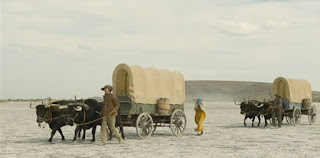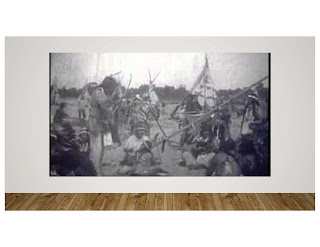He’s
on the stoop, phoning me for a walk.
It’s
Sunday, and I pull wind pants over tights
and
a sweater too long, tucked into panties.
Sweating,
I harness Dolly
and
shoot down the street,
startling
squirrels and grackles and the kids
who
are all chalk.
We meet across from the water tower
and
enter a cul-de-sac, its slow track
of
sand cracking in the slanted cold. We cough
and
kick rocks into gaps,
grinning
like fences
as we march.
Because it’s Sunday, early enough to
smell
frost, and we’re friends
to
all that’s chucked in the trash heap
our
talk is rubbish: Indonesia and orangutans lost
to
palm oil, pension plans and the narrowing hips
of
a sick woman’s frame turning away.
An empty waste bag tumbles across
a
hotel parking lot
showing
us
one
way to go.













































